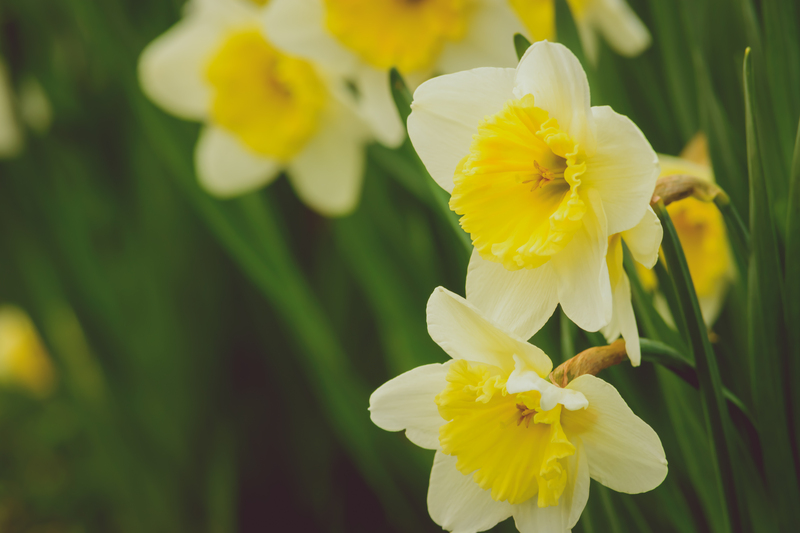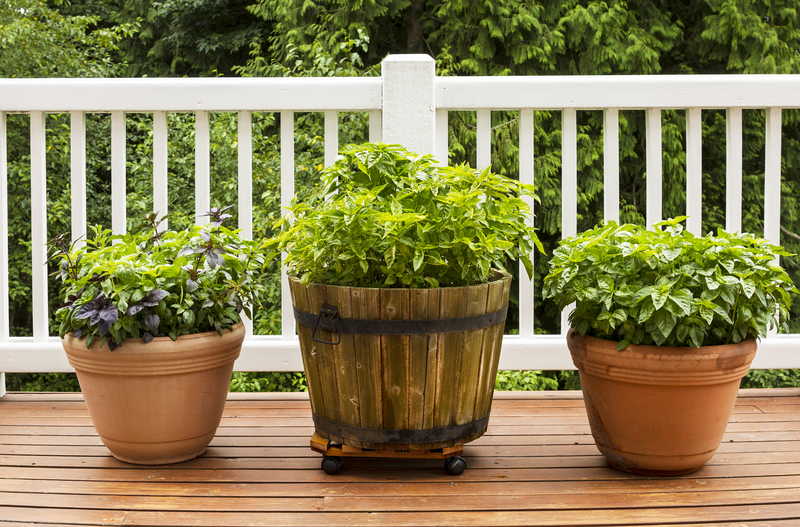Discover Edible Wildflowers in the UK
Posted on 31/12/2024
The UK countryside is a treasure trove of edible wildflowers waiting to be discovered by foragers, nature
enthusiasts, and culinary adventurers. These wild blooms not only add a splash of color to meadows and hedgerows
but also offer unique flavors and nutritional benefits. In this article, we will explore some of the best edible
wildflowers in the UK and provide tips on how to forage responsibly.
1. Wild Garlic (Allium ursinum)
Wild Garlic, also known as Ramsons, is one of the most popular edible wildflowers in the UK. Found in damp
woodlands, this plant's green leaves and white star-shaped flowers are both edible. Wild garlic can be used in
salads, soups, and pesto for a distinctive, garlicky flavor. Just be cautious when foraging to avoid confusing
it with poisonous plants like Lily of the Valley.

2. Elderflower (Sambucus nigra)
Elderflower is a favorite among foragers and culinary enthusiasts. The creamy-white flowers bloom in late spring
to early summer and have a delightful fragrance. Elderflowers are commonly used to make cordials, wines, and
syrups. Be sure to pick the flowers on a dry day for the best flavor.
3. Meadowsweet (Filipendula ulmaria)
Meadowsweet is found in damp meadows and along riverbanks. This plant has a pleasant, almond-vanilla aroma. Both
the leaves and flowers are edible and can be used to flavor drinks, desserts, or even added to jams for a unique
twist. When foraging, remember to take only what you need to ensure the plant continues to thrive.
4. Dandelion (Taraxacum officinale)
Often considered a weed, the dandelion is surprisingly versatile. The bright yellow flowers can be used to make
dandelion wine or fritters, while the leaves are great in salads. Dandelion roots can be roasted and ground to
make a coffee substitute. Just be sure to harvest from areas that are not contaminated with pesticides.
5. Wild Rose (Rosa spp.)
Wild roses produce delicate pink or white flowers that can be used to create rose water, syrups, or jellies. The
petals can be added to salads or desserts for a floral note. Additionally, the hips of wild roses are rich in
Vitamin C and can be used to make teas and jams. Be sure to avoid cultivated varieties which may have been
sprayed with chemicals.
6. Borage (Borago officinalis)
Borage is a striking plant with star-shaped blue flowers that are often found in gardens or growing wild. The
flowers have a mild cucumber taste and can be used to garnish salads, drinks, or desserts. Leaves can also be
used, although they are best enjoyed cooked to reduce the scratchy texture.
Tips for Foraging Edible Wildflowers
- Do Your Research: Make sure to correctly identify the plants before consumption. Use a
reliable foraging guide or join a local foraging group.
- Harvest Responsibly: Only take what you need and ensure you leave enough for the plant to
propagate. Avoid picking endangered or rare species.
- Location Matters: Avoid foraging in areas that might be contaminated with pollutants,
herbicides, or pesticides, such as roadsides and industrial areas.
- Mind the Law: Ensure that you have permission to forage, especially on private property or
protected lands.
Pros of Foraging Edible Wildflowers
- Eco-Friendly: Foraging is a sustainable way to source food that doesn't require intensive
agricultural practices.
- Nutrition: Many wildflowers are packed with vitamins and minerals.
- Cost-Effective: It can be a free or low-cost way to supplement your diet with fresh, wild
foods.
- Culinary Variety: Adds unique flavors and ingredients to your meals.
- Enjoy Nature: Provides an excellent opportunity to spend time outdoors and connect with
nature.
Cons of Foraging Edible Wildflowers
- Identification Issues: Misidentification can lead to consuming toxic or inedible plants.
- Environmental Impact: Over-foraging can harm local ecosystems.
- Legal Restrictions: Foraging may be restricted in certain areas or require permission.

Key Takeaways
- The UK countryside is rich with edible wildflowers like wild garlic, elderflower, and dandelions.
- Foraging requires proper identification and responsible harvesting to protect plant populations and your
health.
- The practice offers multiple benefits, including nutritional, economic, and environmental ones. However,
be mindful of its challenges and potential drawbacks.
Conclusion
Discovering edible wildflowers in the UK is not only a rewarding and educational experience but also a way to
enjoy the natural bounty that the countryside offers. Whether you are experienced or just starting, foraging can
add a touch of the wild to your culinary creations. Always remember to forage responsibly, respect nature, and
enjoy the process of reconnecting with the great outdoors.



